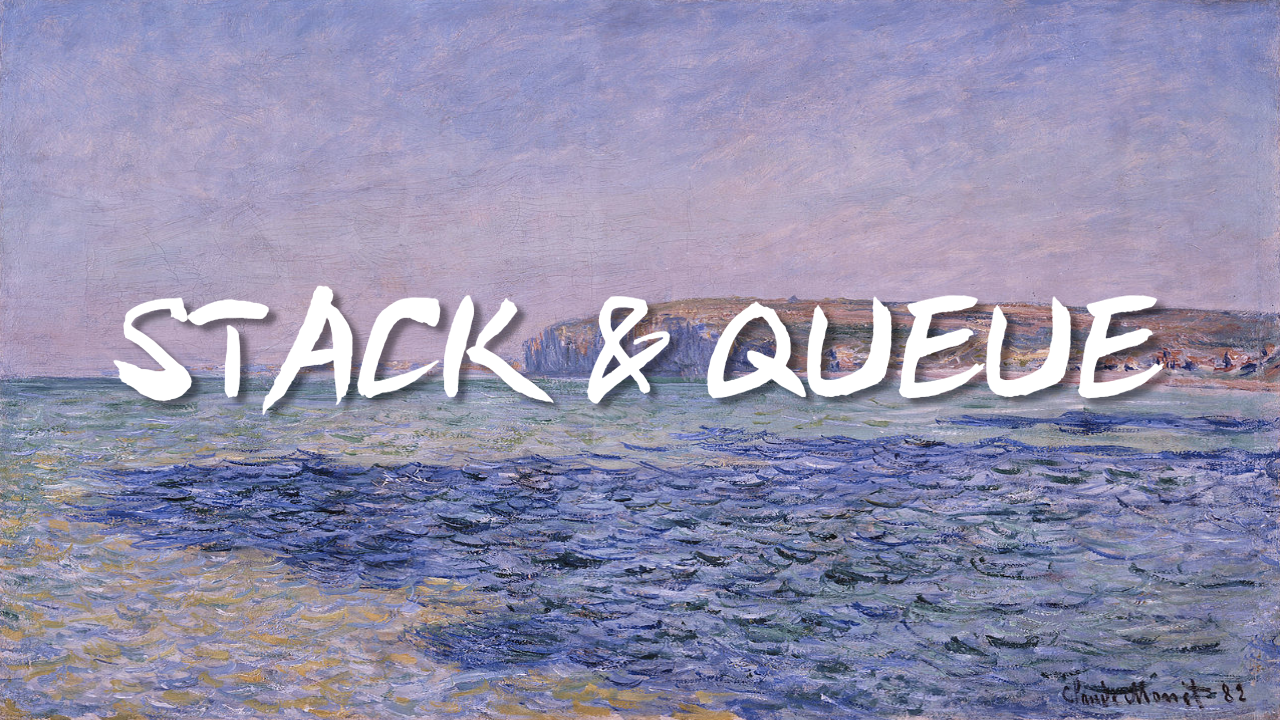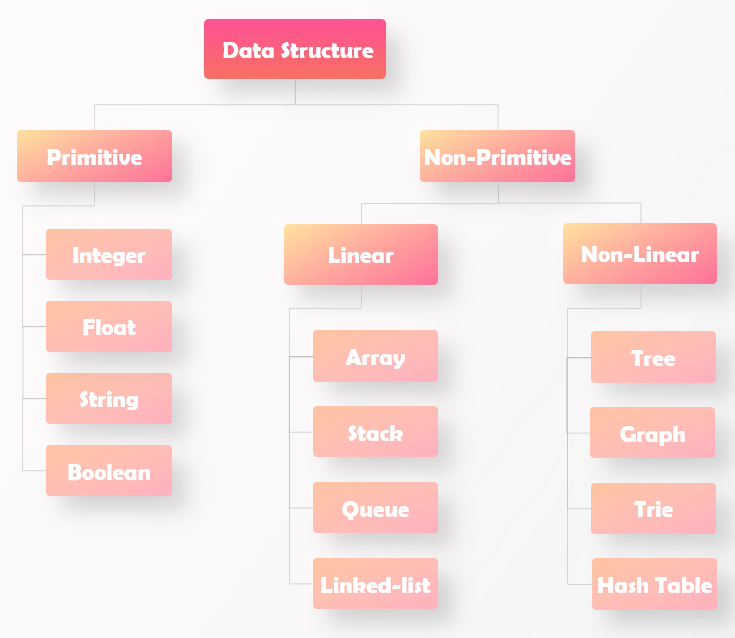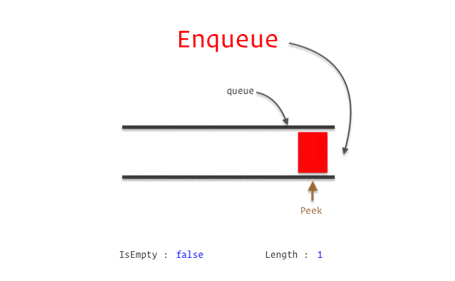Stack & Queue

Shadows on the Sea The Cliffs at Pourville, 1882, Claude Monet {:.figure}**
Data structure is a storage that is used to store and organize data.
It is a way of arranging data on a computer so that it can be accessed and updated efficiently.

1. Stack
1.1 What is Stack?
If you make a stack of block, The last block stacks are of last in first out type of service.
The last block you put on top of a stack would be the first block.

1.2 Using an array as a stack
// Javascript
let letters = []; // this is our stack
let word = 'racecar';
//let word = 'parkbyungchan';
let rword = '';
// put letters of word into stack
for (let i = 0; i <word.lenth; i++>){
letters.push(word[i]);
}
............................................
// put off the stack in reverse order
for (let i = 0; i <word.lenth; i++>){
rwords += letters.pop;
}
if (rword === word){
console.log(word + ' is a palindrome. ') // racecar is a palindrome
}
else {
console.log(word + ' is not a palindrome. ') // parkbyungchan is not a palindrome
}
Arrays are already has all the functions we need in order to use it as a stack!
1.3 Stack Implementation
- push : for placing data onto a stack
- pop : removing the top element of a stack
- length or size : determining how many elements are on a stack
// title: 'Stack.js'
class Stack {
constructor() {
this.count = 0;
this.storage = {};
}
// Adds a value onto the end of the stack
push(value) {
this.storage[this.count] = value;
this.count++;
}
// Removes and returns the value at the end of the stack
pop() {
if (this.count === 0) {
return undefined;
}
this.count--;
let result = this.storage[this.count];
delete this.storage[this.count];
return result;
}
size() {
return this.count;
}
// Returns the value at the end of the stack
peek() {
return this.storage[this.count-1]
}
}
let myStack = new Stack();
myStack.push(1);
myStack.push(2);
console.log(myStack.pop()); // 2
myStack.push("chan");
console.log(myStack.pop()); // chan
console.log(myStack.size()); // 1
2. Queue
2.1 What is Queue?
Queue example is a print queue when a lot of people are printing documents at the same printer.
The documents are printed in the order(first in first out). They were sent to the print queue.

2.2 Queue Implementation
// title: 'Queue.js'
class Queue {
constructor() {
this.collection = [];
}
enqueue(element){
return this.collection.push(element);
}
dequeue(){
return this.collection.shift();
}
front(){
return this.collection[0];
}
size(){
return this.collection.length;
}
isEmpty(){
return this.collection.length === 0;
}
}
let q = new Queue();
q.enqueue('a'); // q = [a];
q.enqueue('b'); // q = [a,b];
q.enqueue('c'); // q = [a,b,c];
q.dequeue(); // q = [b,c];
q.front(); // b
2.3 Priority Queue
2.3.1 What is Priority Queue?
In a priority queue not only pass the element into the queue but also pass the priority of the element.
So if all the priorities are the same number it’s going to behave just like a normal queue.
But when you pass in elements at different priorities the elements that are passed in with a higher priority are sent to the beginning of the queue.
2.3.2 Priority Queue Implementation
// title: 'PriorityQueue.js'
class PriorityQueue {
constructor() {
this.collection = [];
}
printCollection() {
(console.log(this.collection));
}
enqueue(element) {
if (this.isEmpty()){
this.collection.push(element);
} else {
let added = false;
for (let i=0; i<this.collection.length; i++){
if (element[1] < this.collection[i][1]) { //checking priorities
this.collection.splice(i,0,element);
added = true;
break;
}
}
if (!added){
this.collection.push(element);
}
}
}
dequeue() {
let value = this.collection.shift()
return value[0];
};
front() {
return this.collection[0];
};
size() {
return this.collection.length;
};
isEmpty() {
return this.collection.length === 0;
};
};
let pq = new PriorityQueue();
pq.enqueue(['WannaBe', 2]);
pq.enqueue(['CodingMaster', 3]);
pq.enqueue(['I', 1]);
pq.printCollection(); // [['I', 1], ['WannaBe', 2], ['CodingMaster', 3]]
pq.dequeue(); // [['WannaBe', 2], ['CodingMaster', 3]]
pq.front(); // ['WannaBe', 2]
pq.printCollection() // [['WannaBe', 2], ['CodingMaster', 3]]
https://www.freecodecamp.org/
https://www.codesdope.com/
https://algorithmtutor.com/
https://blog.penjee.com/learnprogramming/programming-gifs/
https://dev.to/abdisalan_js/4-ways-to-traverse-binary-trees-with-animations-5bi5
https://www.programiz.com/